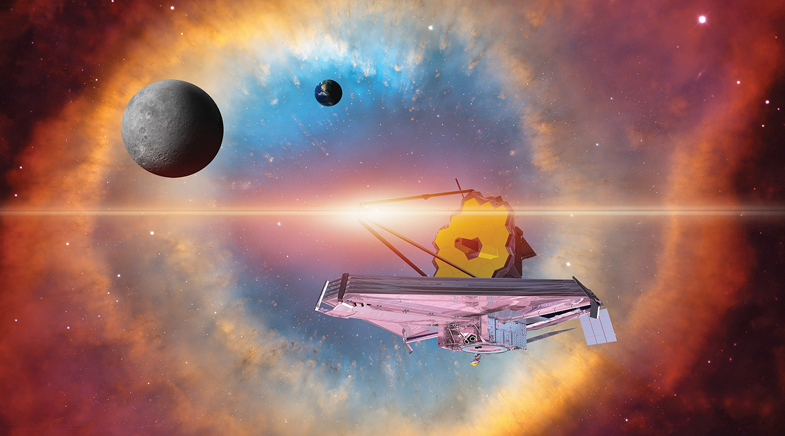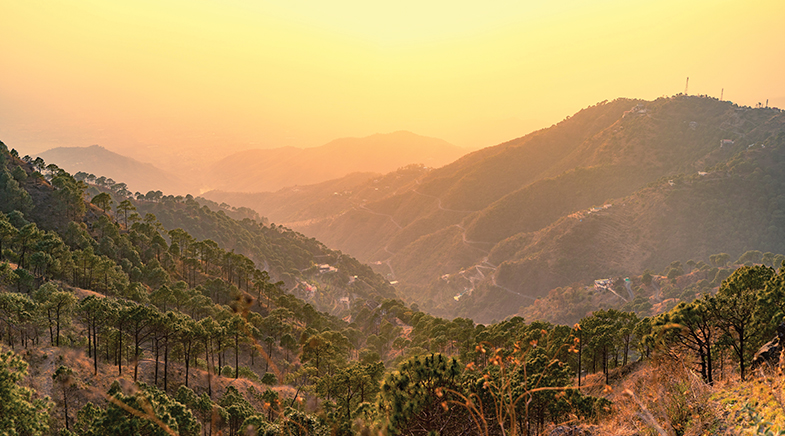Brick in a lunar wall
-
- from Shaastra :: vol 04 issue 04 :: May 2025

A bacteria slurry with a soil simulant promises to repair sintered bricks in space settlements.
What does it take to build a house on the Moon or on Mars? To answer this, Aloke Kumar knew he had to start with the fundamentals or the building block: the brick. Led by Kumar, researchers in the Department of Mechanical Engineering at the Indian Institute of Science, Bengaluru, have developed a bacteria-based technique to build and repair bricks for the lunar and Martian environments.
Foreseeing human settlements in space, Kumar developed a technique in 2021 to make bricks out of lunar and Martian soil simulants using a soil bacterium called Sporosarcina pasteurii. But the bricks needed to withstand harsh conditions, such as extreme temperature swings, solar winds, and meteorites. In a recent paper in Frontiers in Space Technologies, Kumar writes about the method to repair bricks damaged by such conditions (bit.ly/spacebrickrepair): a slurry of the same bacteria, poured into the nooks and crevices of the splintered brick, holds it together.
In microbial-induced calcite precipitation, Sporosarcina pasteurii forms a calcium carbonate shell, sort of mummifying itself. This increases soil strength. According to one theory, bacteria on early Earth captured carbon dioxide from the atmosphere in the form of these carbonates. "It reminded me of the folktales my grandmother would tell me, about people turning to stone. And here in my lab was a bacterium that turned to stone in front of me," Kumar says.
The bacteria strain the team worked on utilised urea and calcium to get calcium carbonate crystals in about a week.
The strain of bacteria that the team worked on utilised urea and calcium to obtain calcium carbonate crystals in about a week. The researchers added guar gum to the mix to culture this bacterium in lunar soil. "Once this calcium carbonate shell comes in, it becomes a purely inorganic shell."
The bricks initially made by this process had the compressive strength of ice, or 6-7 megapascals (MPs). Bricks used for construction on Earth can withstand 20-30 MPs. So, Kumar and his team created sintered bricks and added faults. They then filled those notches with the bacteria slurry and soil simulant. The bacteria grew inside the defect and bonded with the original material. The result was a healed brick, as strong as the original one. "The adhesion between this biological slurry and the sintered brick is very strong — and that's the key to sticking bricks together to make a house," says Kumar.
The next step is to test the bricks in outer space. Shubhanshu Shukla, an astronaut on Axiom Mission 4, scheduled to fly to the International Space Station in early June, is doing his Master's research with Kumar in his lab. They have published a paper on designing a lunar habitat named BHEEM (Bhartiya Extraterrestrial Expandable Modular Habitat). Kumar hopes to send the bricks to be tested in space in the upcoming Gaganyaan mission.
Have a
story idea?
Tell us.
Do you have a recent research paper or an idea for a science/technology-themed article that you'd like to tell us about?
GET IN TOUCH














